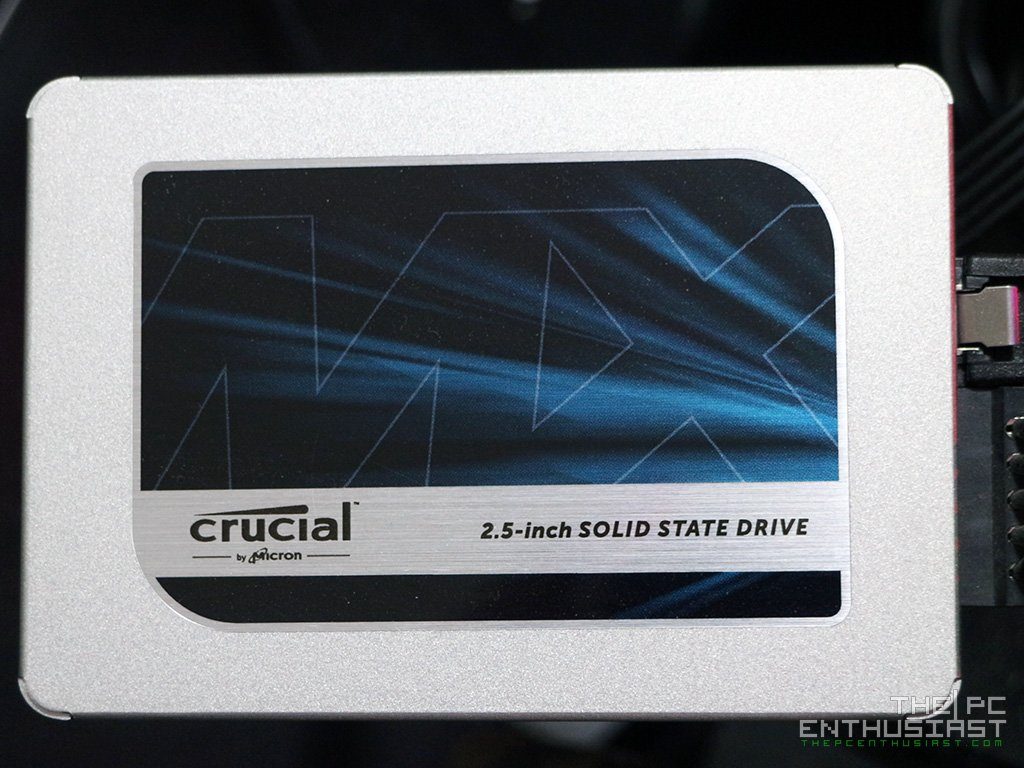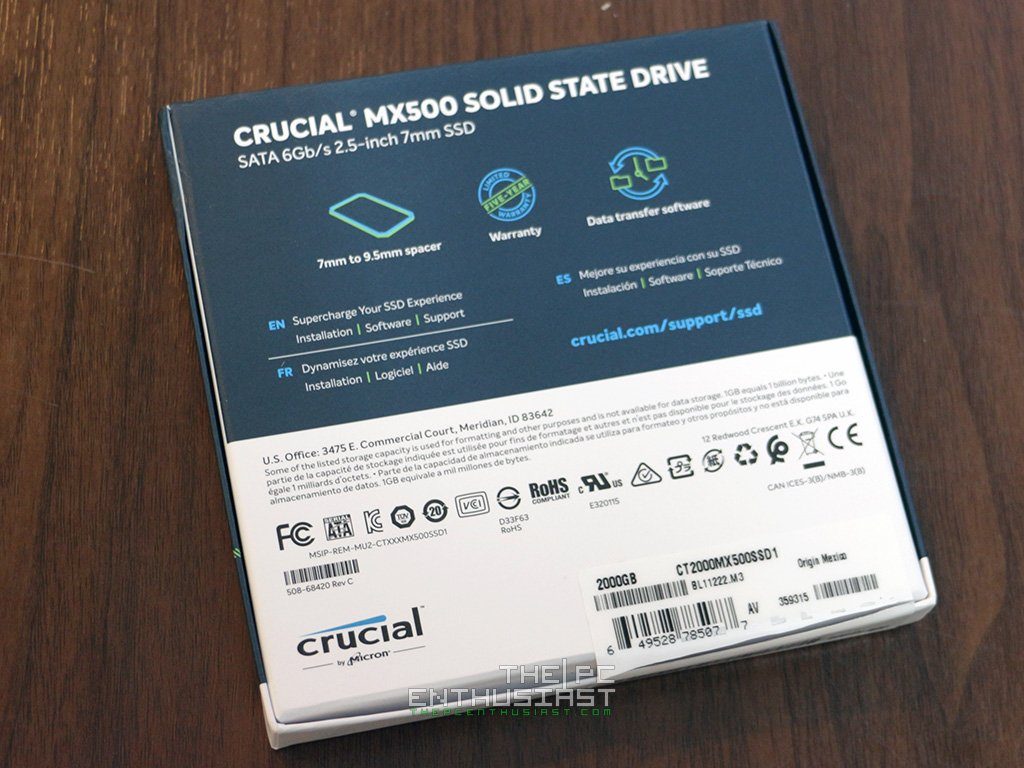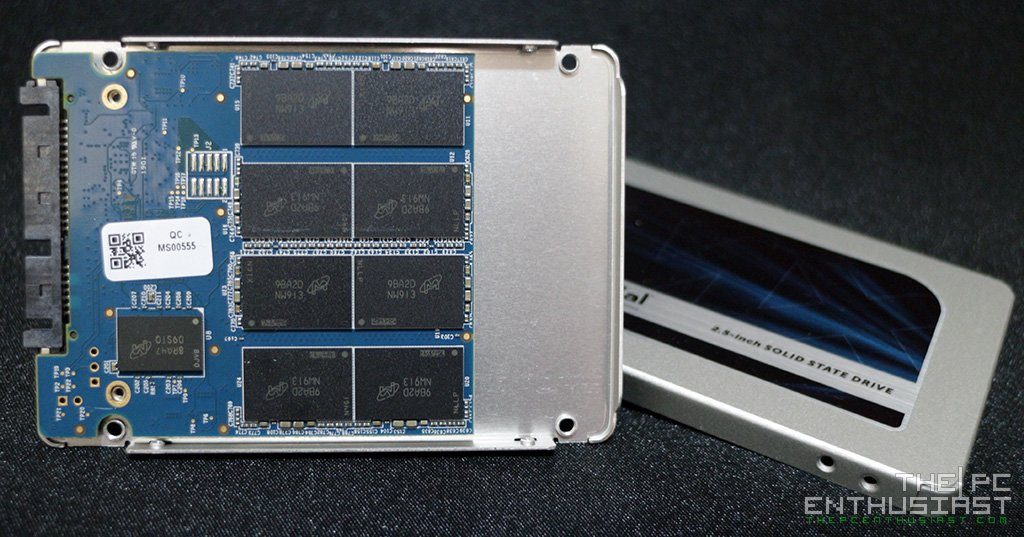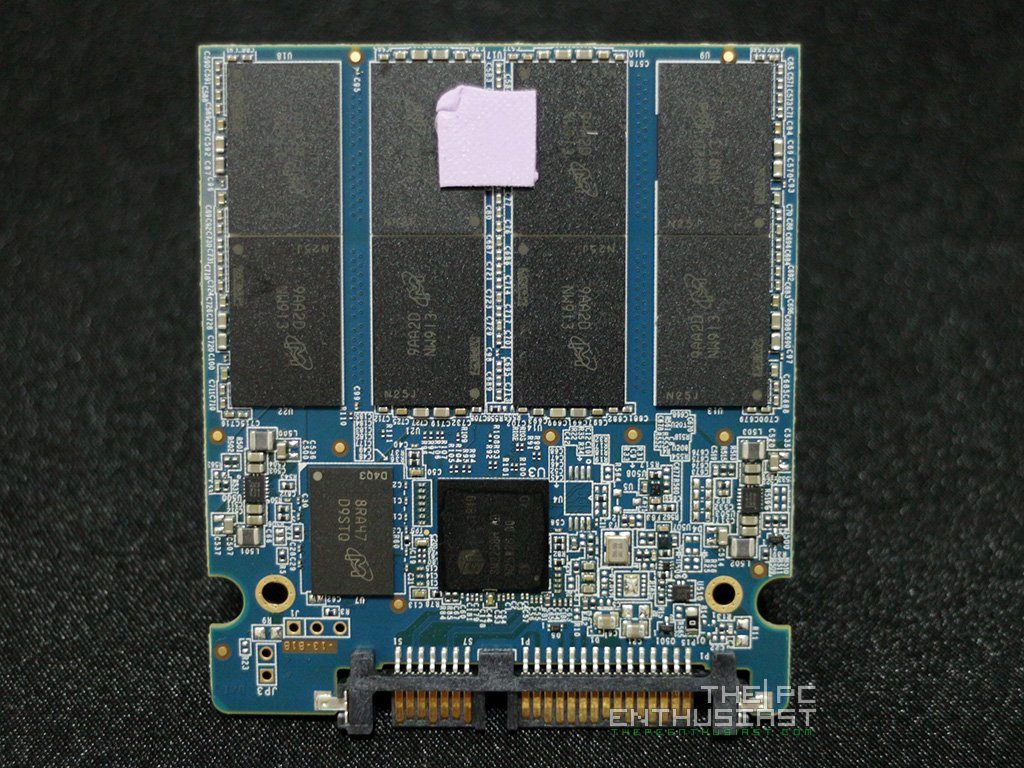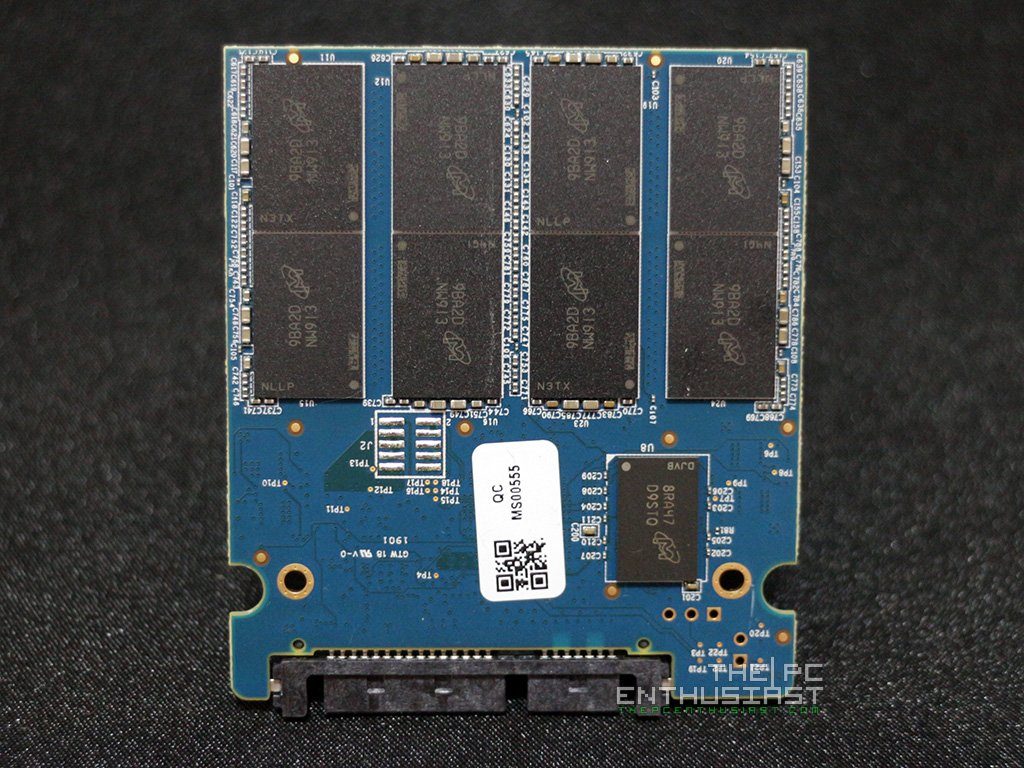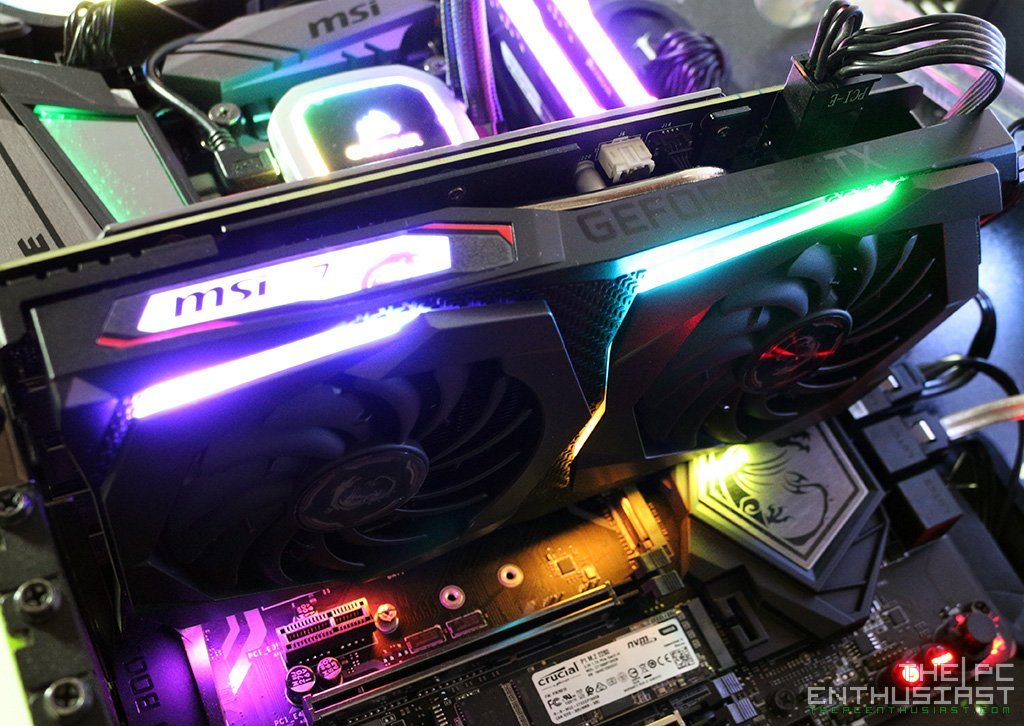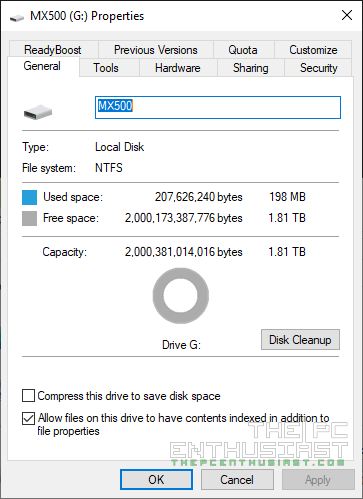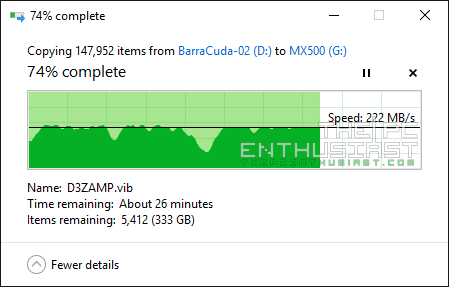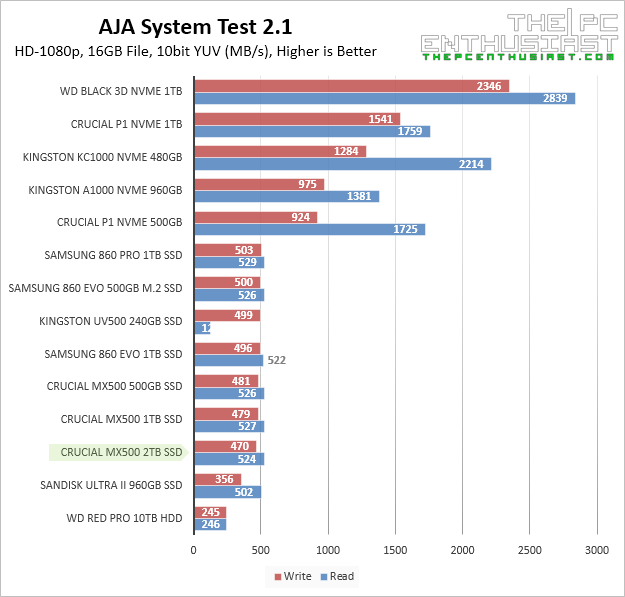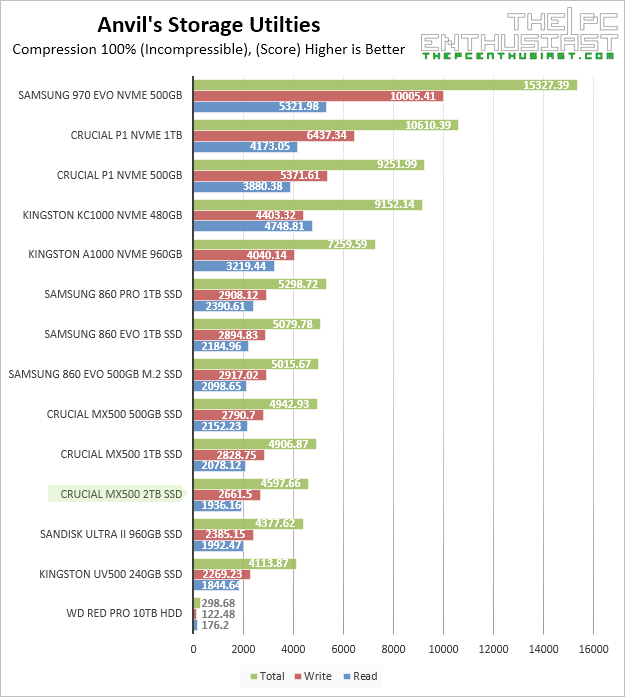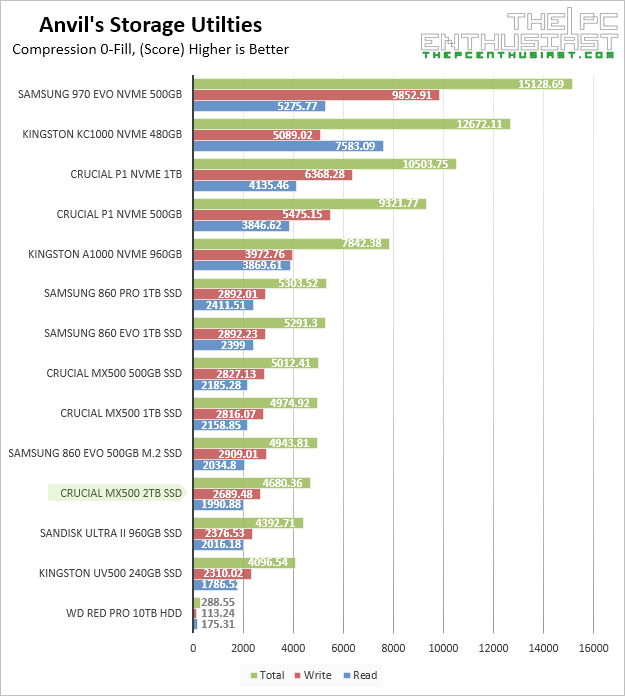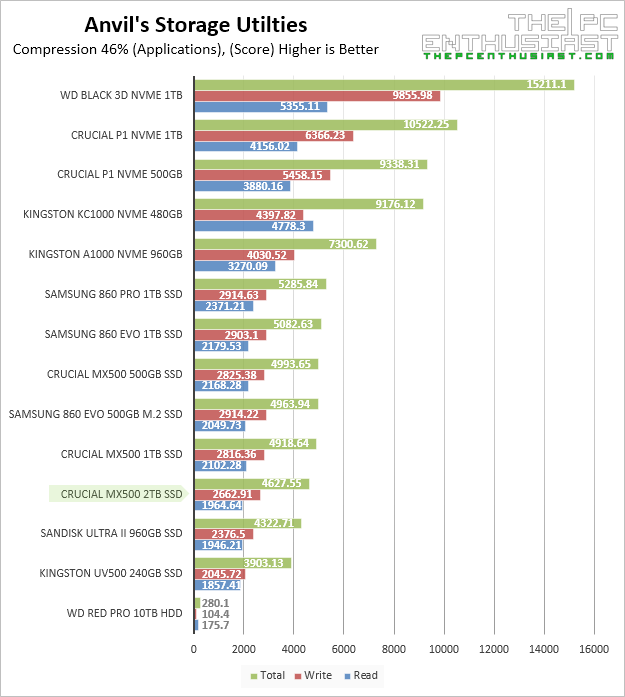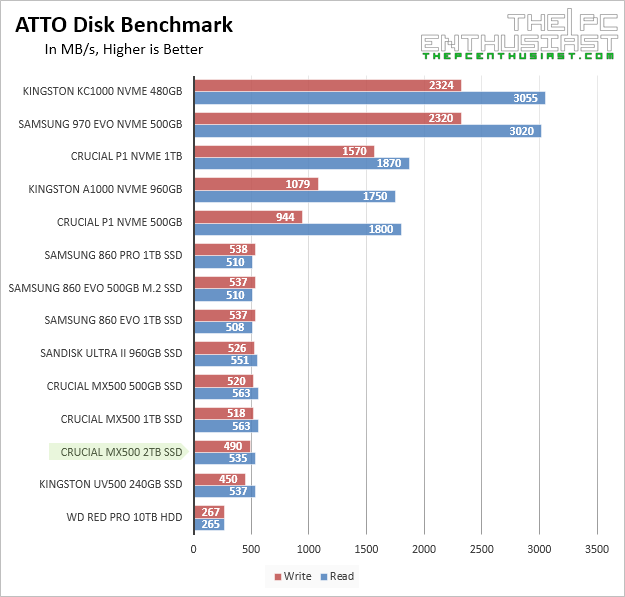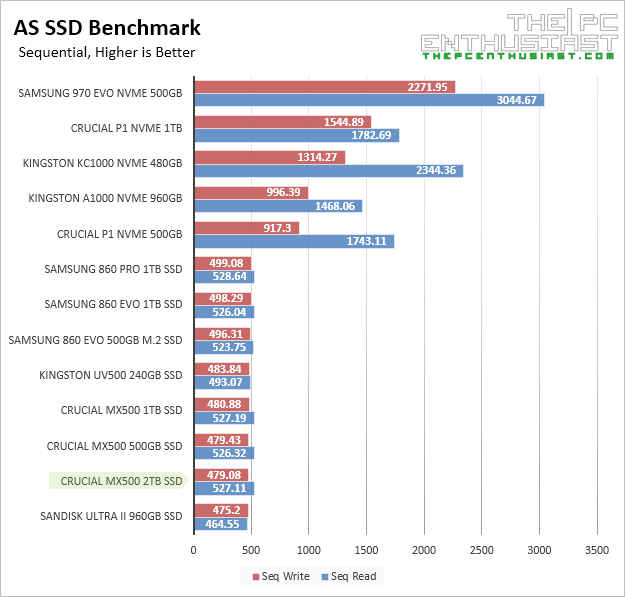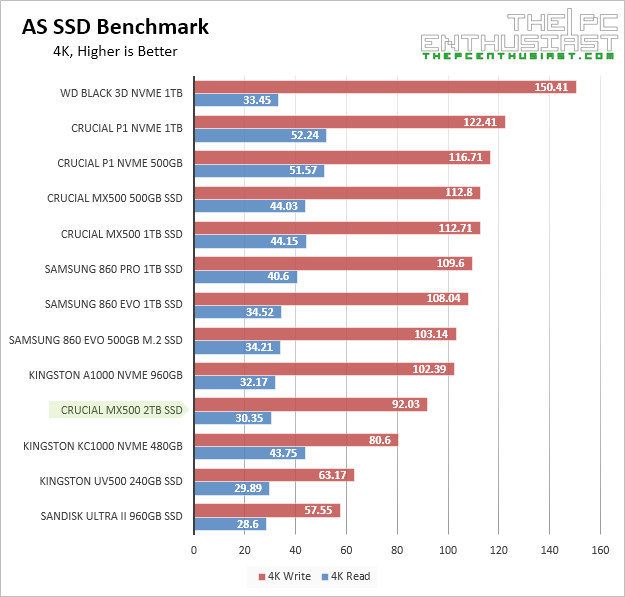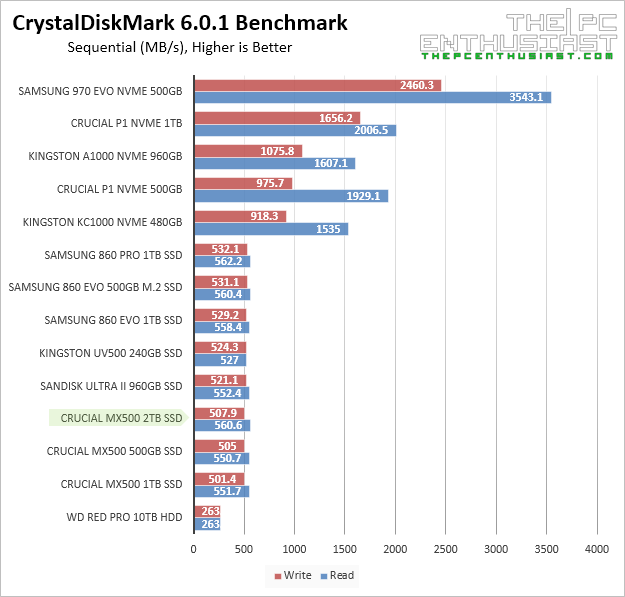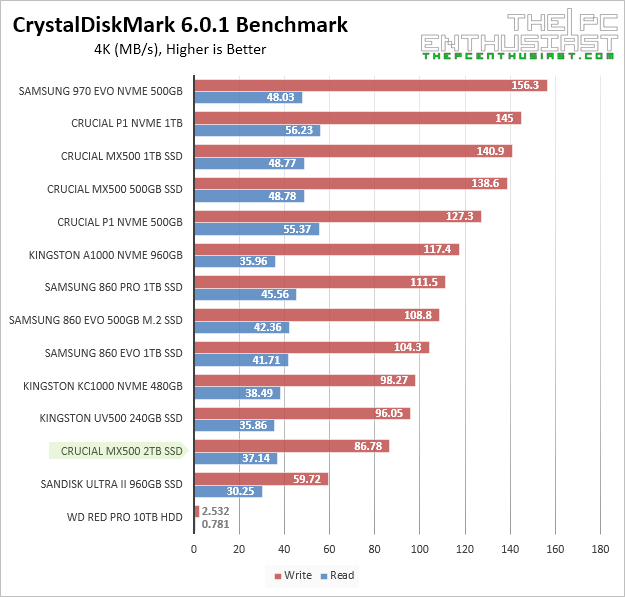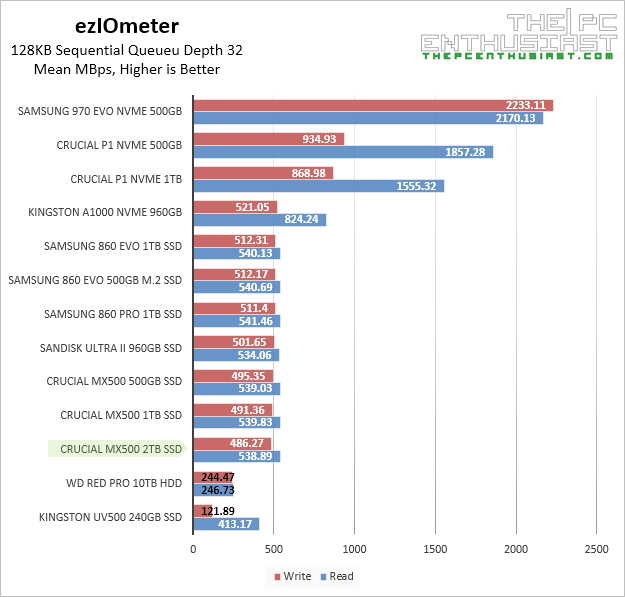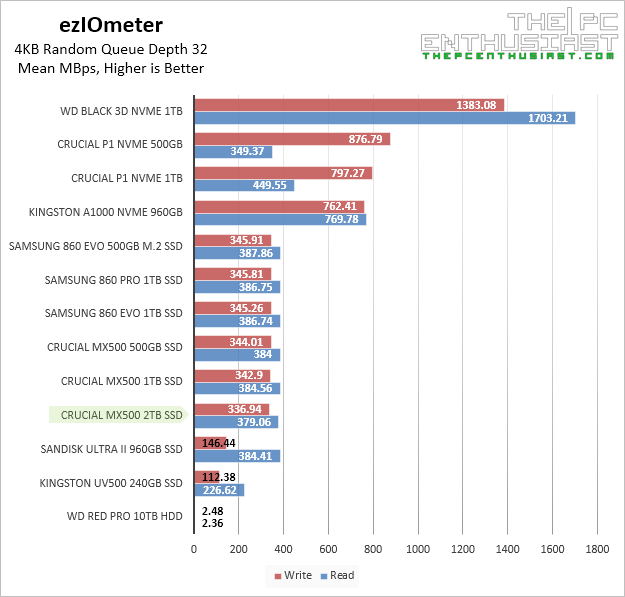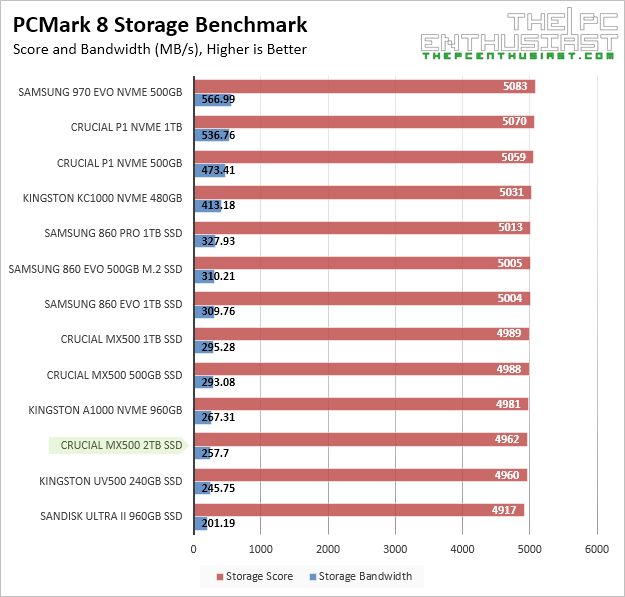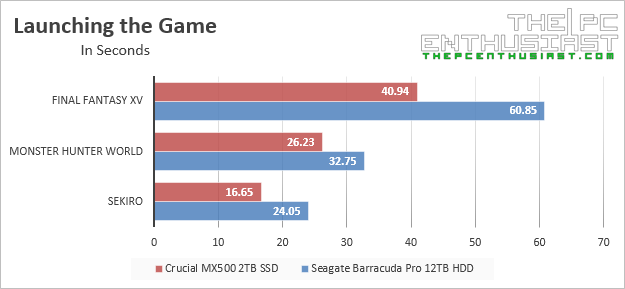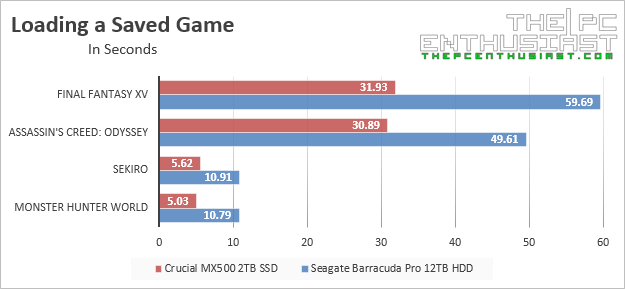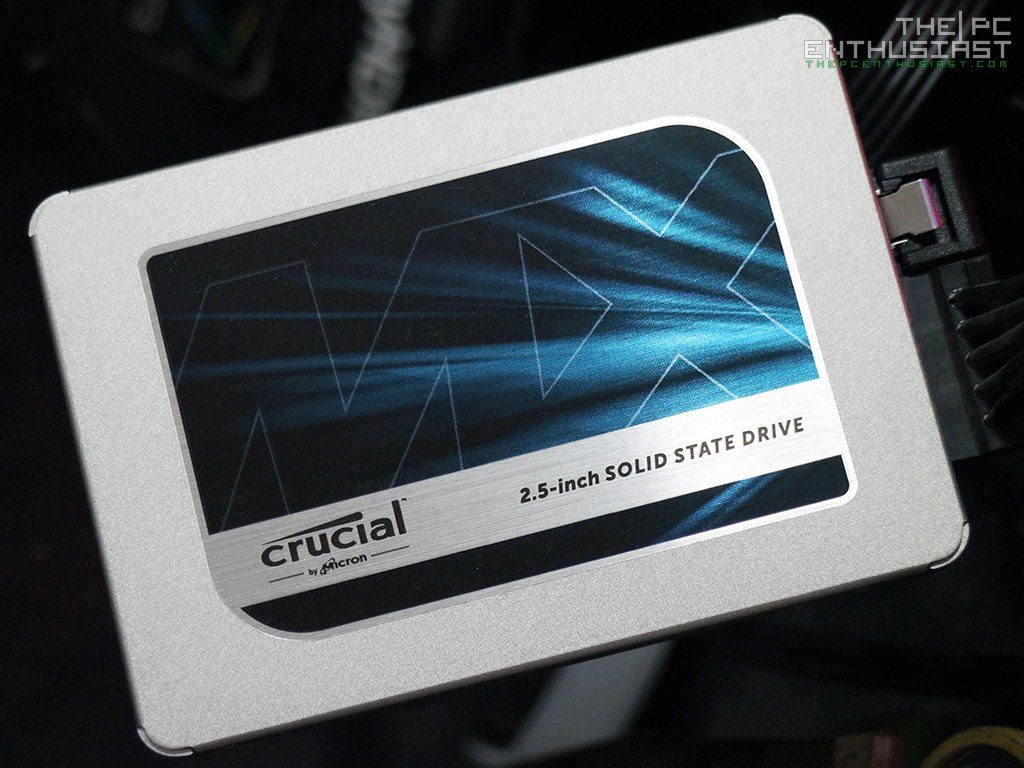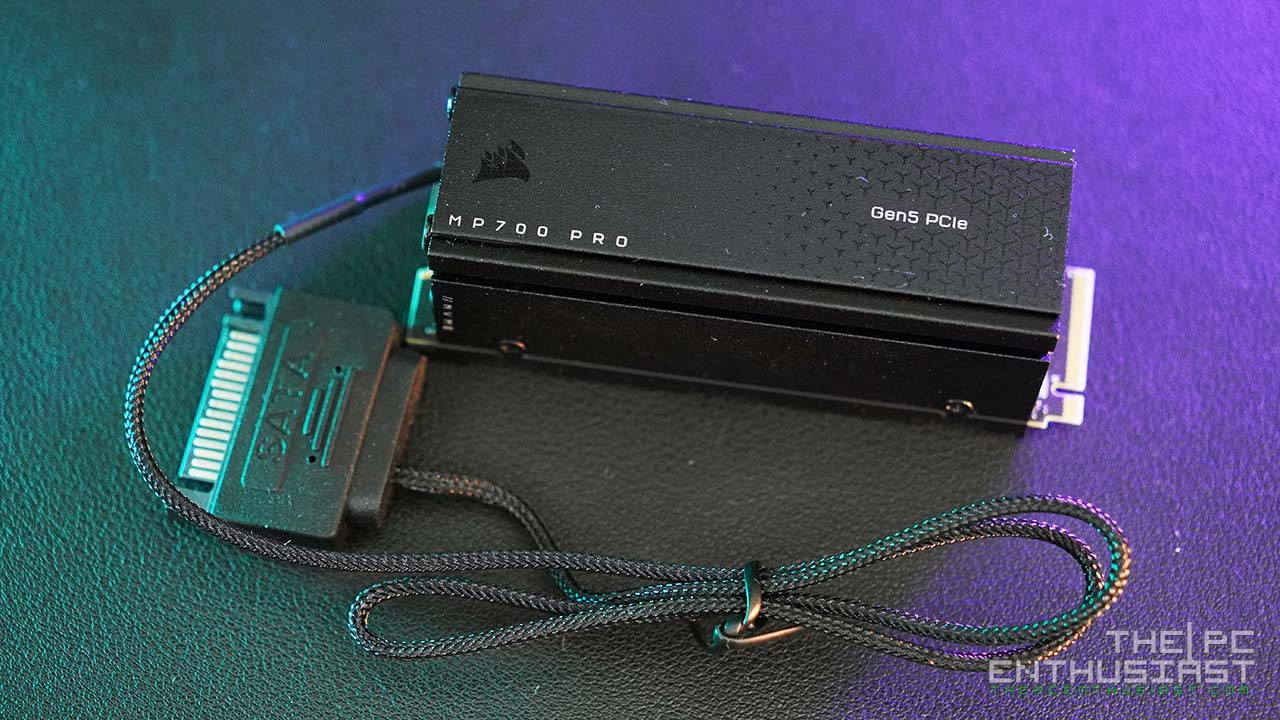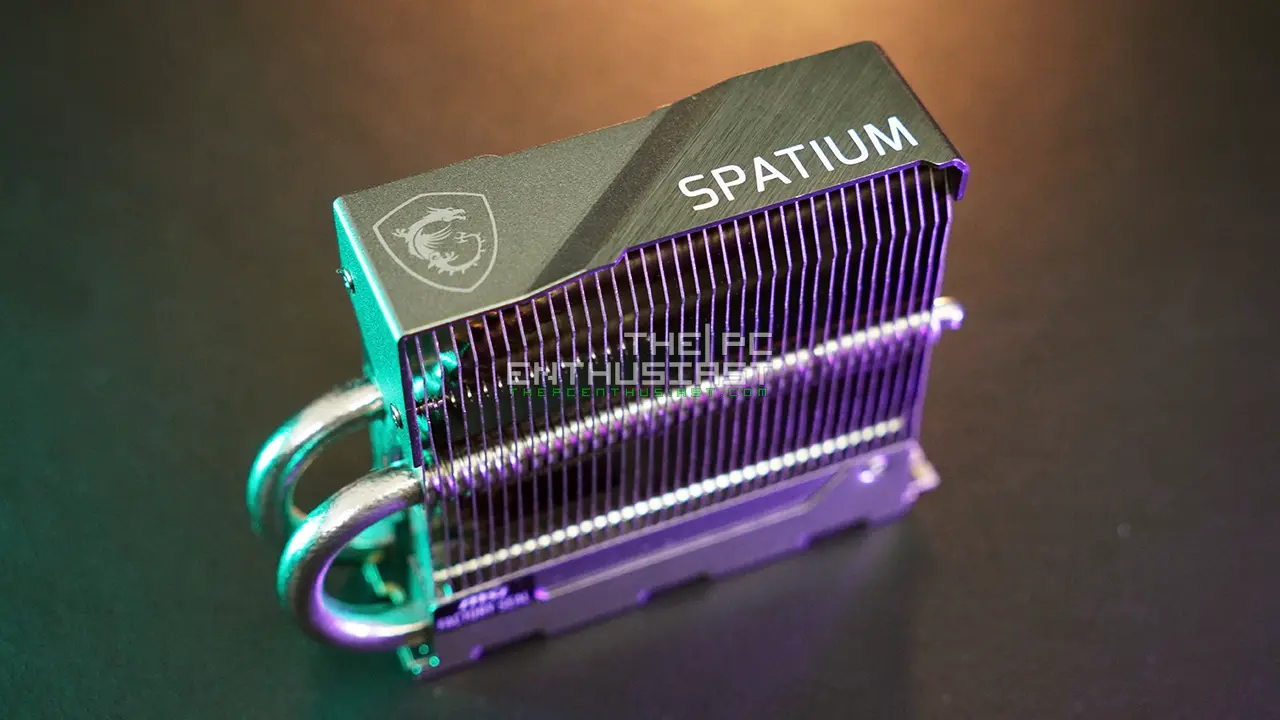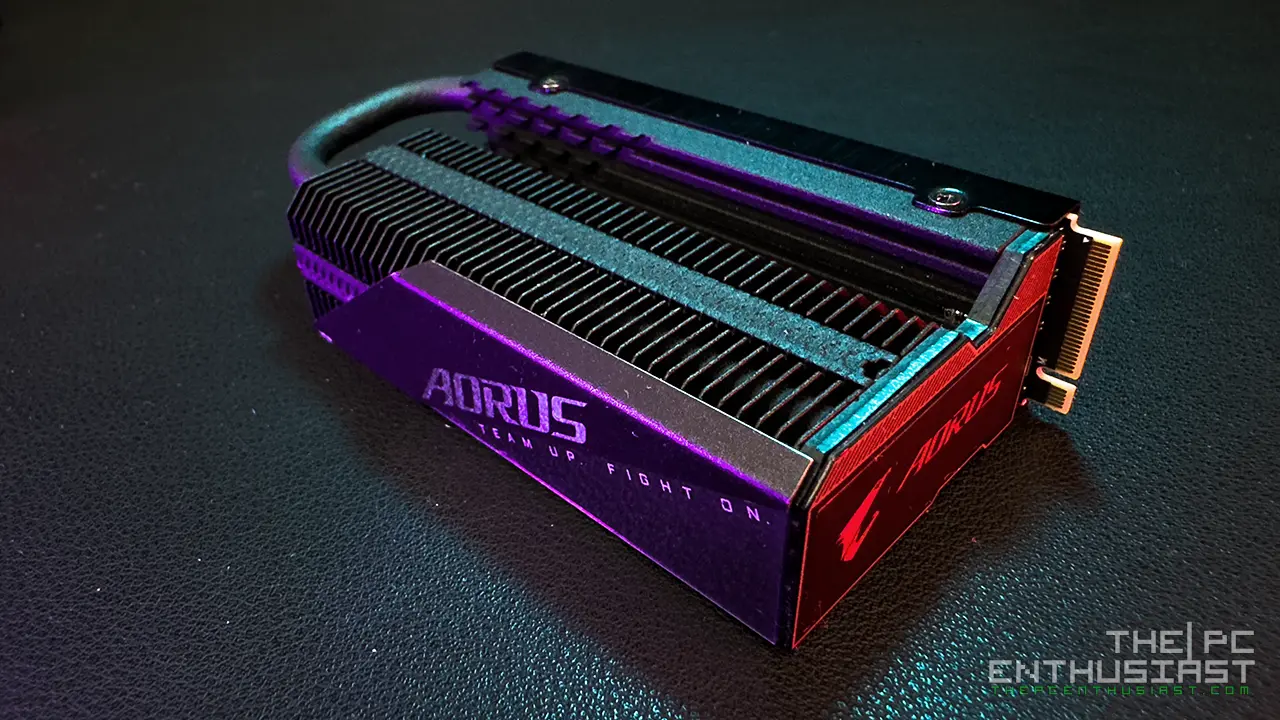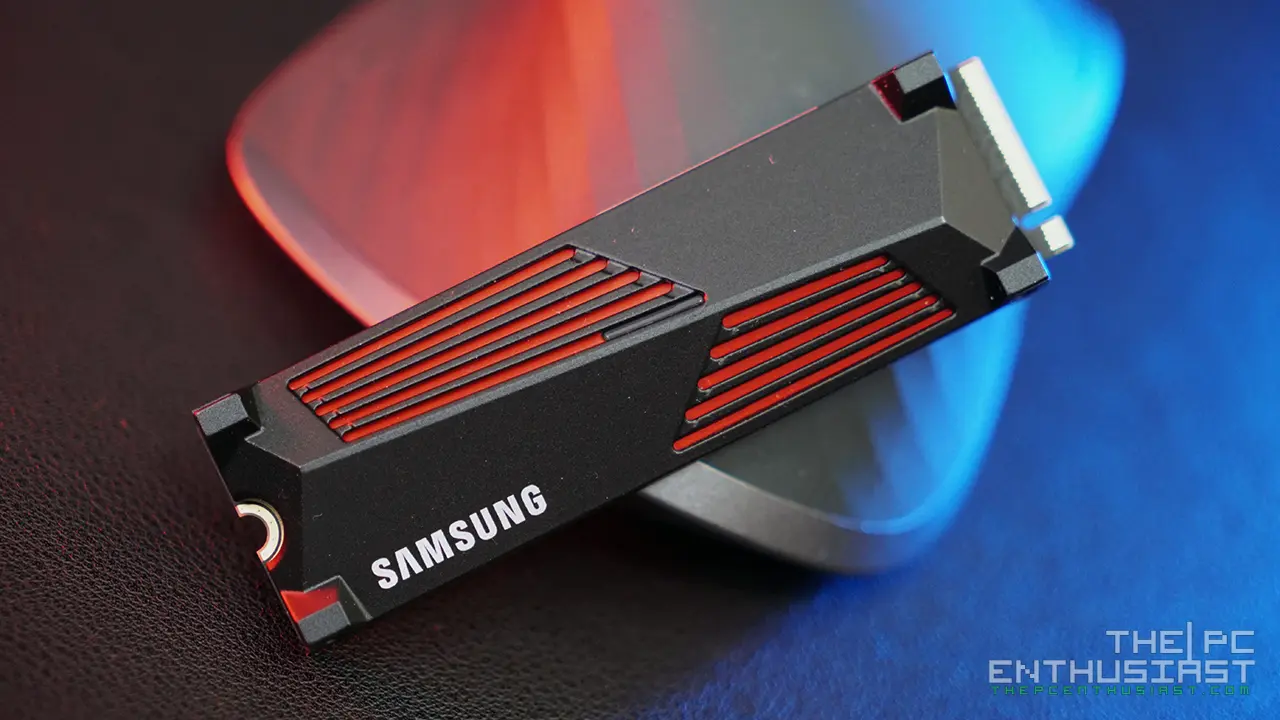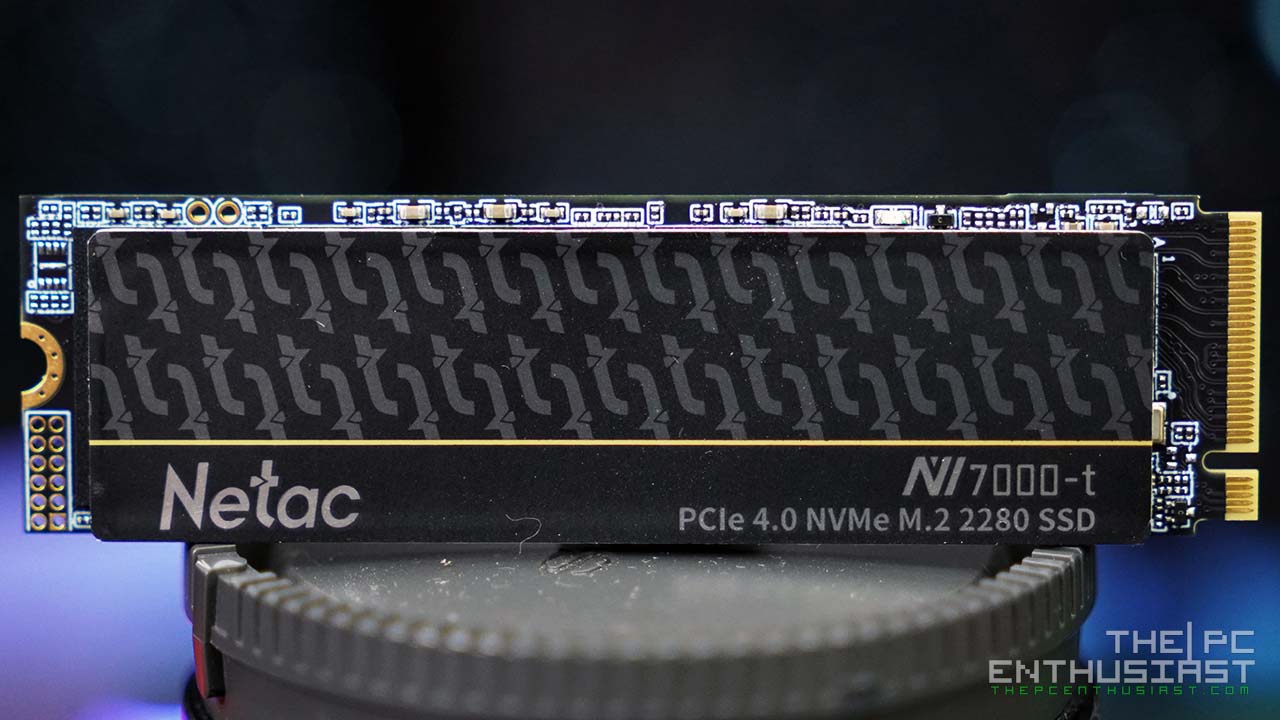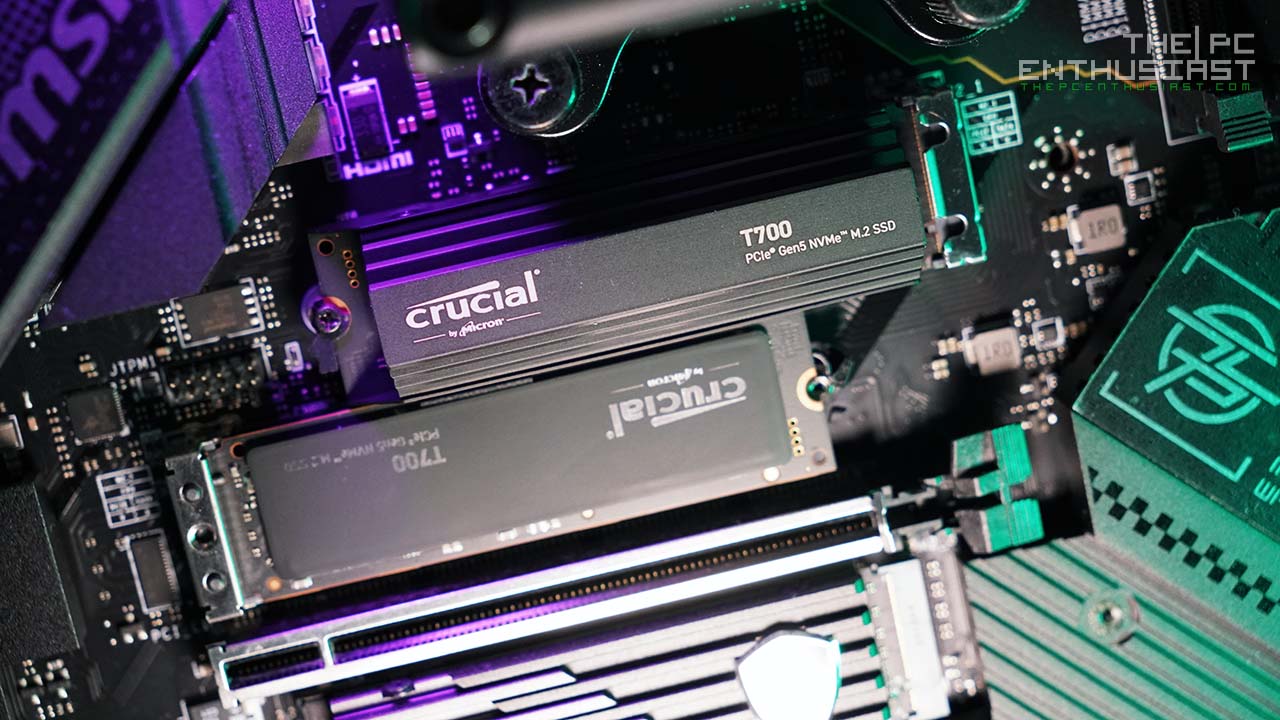Today we are going to review the Crucial MX500 SSD 2TB capacity. We previously reviewed the 500GB and 1TB capacities, and both drive capacities generally perform well. So how does the 2TB compare with the other capacities? Do they have the same performance? Is it going to be faster? How does it perform when it comes to gaming? These are just some of the questions we are going to try to answer in this review. We’ve included some game benchmarks in this review to show you some of the benefits of using an SSD for a game drive vs an HDD. So if you’re in the market looking for a large storage drive for your files or a game drive, stick around and continue reading our Crucial MX500 2TB SSD review below.
Crucial MX500 SSD 2TB Review – Features and Specs
The Crucial MX500 SSD series is currently the company’s high performance SSD storage solution. It has been in the market since January 2018. The MX series basically offers faster read/write speeds, better reliability, security and protection compared to their budget friendly BX series.
The MX500 SSD series offers great price to performance ratio and is “45 times” more energy efficient than a typical hard drive. It features Dynamic Write Acceleration optimizing its write performance; Integrated Power Loss Immunity; Exclusive Data Defense that protects against data corruption; Adaptive Thermal Protection; and an AES 256-bit hardware-based encryption to keep the data safe and secure. These protection and security features are not available on the BX series. Another reason why you should consider the MX rather than the BX series.
The Crucial MX500 SSD uses the 2nd generation Micron 3D NAND technology, paired with a Silicon Motion SM2258 controller. The 2nd gen 3D NAND chips features 64 layers with 256-gigabit component. Micron’s floating gate NAND is designed with CMOS Under the Array (CUA), which allows to minimize the footprint of the die. It measures 59 square millimeters, making it one of the world’s smallest 256-gigabit die.
On paper, the performance of the different capacities of the MX500 SSDs are similar regardless of their capacity. From the 250GB to 2TB capacity, all MX500 drives offers performance of up to (or around) 560 MB/s sequential read and 510 MB/s sequential write speeds; or 95,000 IOPS random read and 90,000 IOPS random write. But we will find out in this review whether they really do have the same performance in real world use or scenario.
The Crucial MX500 series are available in 250GB, 500GB, 1TB and 2TB capacities; and all capacities have a mean time to failure rate of 1.8 million operating hours. However, they have varying drive lifetime or Total Bytes Written. The 250GB has a TBW of 100TB, 500GB has 180TB, 1TB has 360TB and the 2TB has a 700TB of TBW. You can check out more details from the specifications table below.
| Series | MX500 | MX300 | MX200 |
|---|---|---|---|
| Controller | Silicon Motion SM2258 | Marvell 88SS1074 | Marvell 88SS9189 |
| NAND | 64-layer 3D TLC Micron 256 Gbit | 32-layer 3D TLC Micron 384 Gbit | 16nm MLC Micron 128Gb |
| Capacities | 250GB, 500GB, 1TB, 2TB | 275GB, 525GB, 1TB, 2TB | 250GB, 500GB, 1TB |
| Form Factor | 2.5" SSD & M.2 2280 | 2.5" SSD & M.2 2280 | 2.5" SSD, mSATA SSD, M.2 2280 |
| Write Endurance | 100TB to 700TB | 80 to 400 TB | up to 320TB |
| Encryption | TCG Opal 2.0 & IEEE-1667 (eDrive) | TCG Opal 2.0 & IEEE-1667 (eDrive) | TCG Opal 2.0 & IEEE-1667 (eDrive) |
| Warranty | 5 years | 3 years | 3 years |
| Release Date | January 2018 | June 2016 | January 2015 |
| Capacity | 2TB | 1TB | 500GB | 250GB |
|---|---|---|---|---|
| Sequential Read | 560 MB/s | 560 MB/s | 560 MB/s | 560 MB/s |
| Sequential Write | 510 MB/s | 510 MB/s | 510 MB/s | 510 MB/s |
| 4KB Random Read | 95k IOPS | 95k IOPS | 95k IOPS | 95k IOPS |
| 4KB Random Write | 90k IOPS | 90k IOPS | 90k IOPS | 90k IOPS |
| Write Endurance | 700TB | 360TB | 180TB | 100TB |
| Life Expectancy (MTTF) | 1.8 million hours | 1.8 million hours | 1.8 million hours | 1.8 million hours |
Packaging and Closer Look
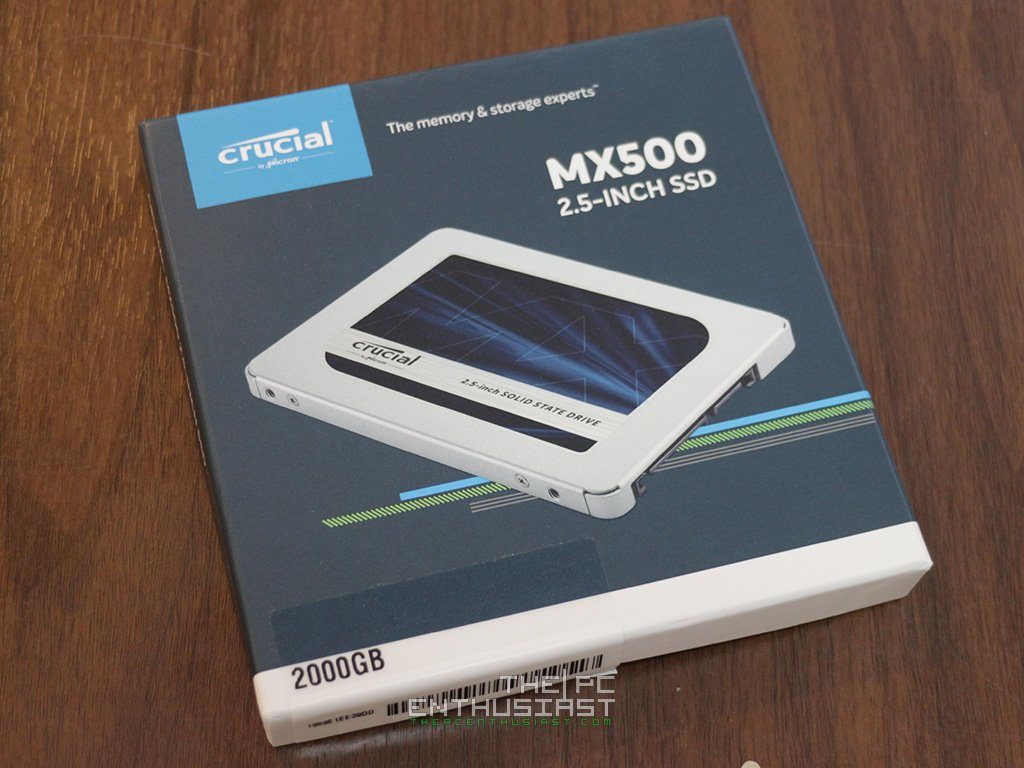
Crucial’s packaging for their SSD lineup remains mostly similar. Their SSDs are enclosed on a small square box; with proper labeling and box art design to distinguish one lineup or series from another. They put a (small) sticker to indicate the capacity of the drive; usually located at the bottom left portion.
The MX500 SSDs have grey/silver aluminum casing, just like all their SSDs. Like with their previous generation, you can only see the label “MX” or “BX” on the sticker; but no clear indication whether which MX or BX generation is it. You’ll have to check the sticker label at the back side of the SSD for additional information; like its model, capacity, serial number and etc.
The MX500 SSD 2TB capacity has its both side of PCB populated with 2nd gen 3D NAND chips. The 1TB capacity only has one side populated. Basically they have similar PCB design/layout; it’s just that the 2TB has 8 more NAND chips compared to the 1TB capacity.
You can also see on the front center (near the SATA ports) the Silicon Motion SM2258 chip controller. Above (or near) the controller is a Micron D9STQ DDR3-1600 memory cache, with 8Gb density. Crucial also uses this memory on their P1 NVMe SSD. The 2TB capacity has two DDR3 chips installed. Thermal pads are placed on the controller and on the middle portion of the NAND chips to help transfer heat from these components to the aluminum casing.
Crucial MX500 2TB SSD Test Setup
In testing the Crucial MX500 2TB SSD capacity, I am using an MSI MEG Z390 ACE motherboard powered with an Intel Core i7-8700K CPU. Below are the rest of the system’s specifications:
Operating System: Windows 10 Pro 64bit
Motherboard: MSI MEG Z390 ACE
Processor: Intel Core i7-8700K
CPU Cooler: Corsair H100i RGB Platinum
Memory: Corsair Vengeance RGB DDR4-3000 16GB
Graphics card: MSI GeForce GTX 1660 Ti Gaming X
Storage Drives: WD Black SN750 NVMe SSD 1TB
Power Supply: Seasonic 850W Prime Titanium
Chassis: Thermaltake Core P5
For those who are uninitiated when it comes to storage drive capacities; you can’t really use the full advertised capacity. In this case, the maximum usable capacity of the MX500 2TB drive is 1.81TB only.
Also note that if you are copying your files from a hard disk drive (HDD) or a slower drive, you’ll notice that the write speed displayed by the copy handler is slower. This is because the slower drive is bottlenecking the (copy/transfer) operation. As you can see from the screenshot below, when I copied the Steam and Origin folders to the MX500 2TB, the maximum transfer speed I got was only around 222MB/s. That’s actually the maximum read speed of the hard drive. It could have been faster if the files were coming from a much faster drive or similarly faster drive.
Also, the benchmark results on the succeeding pages are the results I got during my tests using the specific sample Crucial sent. Performance may vary from one capacity to another and from one system to another (slightly). You may or may not get the same exact results shown in this review.
For comparison, I’ve included benchmark results from different SATA SSDs and a WD hard drive in the graphs. I also included M.2 NVMe SSDs, like the high performance WD Black 3D and Samsung 970 EVO NVMe, including Crucial’s P1 NVMe SSD. This is to show you the difference of SATA HDD vs SSD vs NVMe SSD when it comes to speed.
Crucial MX500 2TB SSD AJA Benchmark Results
AJA’s System Test 2.1 builds on AJA’s popular System Test software, which has been used throughout the industry to provide accurate and detailed evaluations of drive performance statistics. This information allows users to predict the capabilities of any drive system for recording and playing back various resolutions and codecs. Below is the results I got with the Crucial MX500 2TB SSD.
Crucial MX500 2TB SSD Anvil’s Storage Benchmark Results
Anvil’s Storage Utilities is a powerful tool that was designed in order to provide you with a simple means of assessing the read and write performance of your Solid State Drive or Hard Disk Drive. It helps you monitor and check the response time of your unit as well as view the system information collected using Windows Management Instrumentation (WMI). The results below are already in scores and not in MB/s. Below are the scores I got for the MX500 2TB capacity:
Looks like the MX500 2TB capacity is not as fast compared to the lower capacities. It’s just on par with the 1TB capacity, with the later leading just tiny a bit.
Crucial MX500 2TB SSD ATTO Disk Benchmark Results
ATTO Disk Benchmark is a popular disk benchmark tool used to test hard drives, SSD drives, HBAs, RAID Adapters and Storage Controllers. It measures the storage systems performance with various transfer sizes and test lengths for reads and writes. Most of the time it returns the highest possible read/write speed compared to most benchmarking tools for storage. Below is the ATTO benchmark result I got with the Crucial MX500 SSD 2TB capacity:
Crucial MX500 2TB SSD AS SSD Benchmark Results
The AS SSD benchmark determines the performance of Solid State Drives (SSD). The tool contains six synthetic and three copy tests. The synthetic tests determine the sequential and random read and write performance of the SSD. These tests are carried out without using the operating system’s cache. In Sequential test the program measures how long it takes to read a 1 GB file to write respectively. 4K test the read and write performance is determined at random 4K blocks. These tests should represent the Native Command Queuing (NCQ). The additional compression test can measure the power of the SSD in response to compressibility of the data. This is especially for the controllers that use to increase the performance and life of the cell compression. Here are the results I got for the MX500 2TB SSD:
The results above shows that the 2TB capacity is just on par with the 1TB and 500GB in terms of sequential read speed. But it’s still just a tiny bit slower, unnoticeable in real world use.
Crucial MX500 2TB SSD CrystalDiskMark Benchmark Results
The CrystalDiskMark 6.0.1 is a very popular storage benchmark tool. It’s a disk benchmark software that measure sequential reads/writes speed, 4KB Q8T8, 4KB Q32T1 and 4KB Q1T1. Below are the results I got for the Crucial MX500 2TB SSD:
Crucial MX500 2TB SSD ezIOmeter Benchmark Results
The ezIOmeter is an old benchmark utility released in 2015. It is a Windows-based client benchmark tool optimized for storage devices, including SAS, SATA, and NVMe* storage devices. ezIOmeter utilizes IOmeter 1.1’s command line functionality to run industry trusted IOmeter tests. IOmeter has an infamous reputation on being difficult to use. This is one solution to provide NVMe* testing capability while also being easy and fast to use. Below are the results I got for the Crucial MX500 SSD 2TB capacity:
Crucial MX500 2TB SSD PCMark 8 Storage Benchmark Results
The PCMark 8 Storage benchmark tests the performance of SSDs, HDDs and hybrid drives with traces recorded from Adobe Creative Suite, Microsoft Office and a selection of popular games. It can test the system drive or any other recognized storage device, including local external drives. Unlike synthetic storage tests, the PCMark 8 Storage benchmark highlights real-world performance differences between storage devices. Below is the result I got with the Crucial MX500 2TB capacity:
Crucial MX500 2TB SSD Game Test Benchmark Results
I also added some game benchmarks to show you a benefit of using an SSD for gaming. As you can see below, games load faster when installed on an SSD, and loads slower when installed on an HDD. It only affects the loading time; whether launching the game, loading a save game file, or when the game loads a level, area, or graphics. SSDs don’t increase the frame rate of your game. It will not make your game go “butter smooth”. That’s the job of a graphics card.
Pricing and Availability
The Crucial MX500 SSD series has been available in the market for quite some time already. Currently, the 2TB capacity comes with a manufacturer’s suggested retail price of $250 USD. All capacities come with a limited 5 year warranty from Crucial. To be exact, it’s 5 years or before reaching the maximum total bytes written (TBW) indicated on the product’s datasheet. SSD prices constantly changes from time to time, primarily due to competition, NAND availability, and demand and supply. And they do change very often. Be sure to check out the links below for their latest pricing and availability.
Crucial MX500 2TB SSD Review: Conclusion
We have seen how the MX500 1TB and 500GB capacity performed before, so I already have an idea how the 2TB capacity may perform. Generally speaking, the MX500 impressed us in terms of performance and their prices are competitive as well. The 2TB capacity is on par with the other capacities, however it performed just a bit slower compared to the 1TB capacity. Just a tiny bit slower, and this would not be noticeable in real world use. This could well be in the margin of error, or perhaps because the 1TB and 500GB capacities where tested on a different motherboard. Nevertheless, the results that we got for the 2TB capacity was not far from the other capacities and it’s within the expected speed range.
In reality, it’s quite difficult to tell or notice the difference between these high performance SSDs in real world use or scenario. Crucial’s MX series, Samsung’s EVO and PRO series and the rest of the top tier competition are close to each other when it comes to (real world) performance. It’s very difficult to tell which is faster unless you benchmark these SSD and compare the numbers. However, prices can easily be compared and in this case the MX500’s pricing is very attractive and competitive.
When I was writing this review, the MX500 2TB capacity was cheaper compared to Samsung’s 860 series 2TB, WD’s Blue 3D 2TB, SanDisk’s Ultra 2TB, or even Seagate’s 2TB SSD. The only cheaper 2TB SSD at that time was the ADATA SU800. We haven’t tested ADATA’s, so I’m not sure how it performs or its reliability. It would be a no-brainer to choose the MX500 2TB, not unless you’re loyal to a specific brand. Or if Samsung or WD/SanDisk suddenly decided to drop their prices to compete with other brands.
Aside from the MX500’s attractive price and performance, it also comes with a 5-year limited warranty, AES 256-bit hardware-based encryption, integrated power loss immunity, adaptive thermal protection, data defense against data corruption, dynamic write acceleration, and you also get a free Acronis True Image HD software. The data protection, data encryption plus the 5-year warranty is what really attracts me; aside from the price and performance of course. You simply can’t go wrong with this SSD.
I do not have any problems recommending the Crucial MX500 2TB capacity at all. I’m currently using this as a game drive, making the games load faster. If you’re in the market looking for a larger and fast storage drive for your files or games, consider this one, especially when its price is cheaper compared to other SSDs. Like I said before, you simply can’t go wrong with Crucial’s MX500 series.

